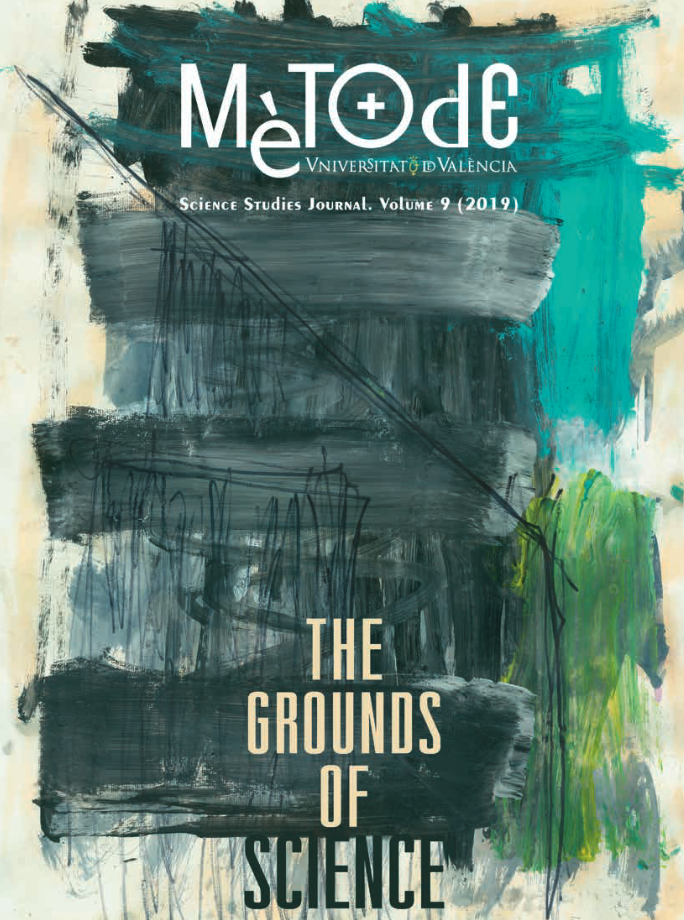Communication about genetic editing: CRISPR, between optimism and false expectations
DOI:
https://doi.org/10.7203/metode.9.11288Keywords:
CRISPR, expectations, interpretation, uncertainty, science communication Abstract
Abstract
Communication is essential in all areas of society, but communication in science is inescapable. Communicating means sharing, showing, teaching, and transferring knowledge about discoveries, observations, and findings both to colleagues and to society in general. That is why good communication must always accompany good science. CRISPR genetic editing tools allow us to modify, at will, the genome of any living organism, including our own species. In this text I review the different relevant communicative events in the short but intense life of these «molecular scissors», so called for their ability to cut the DNA molecule effectively and with precision.
 Downloads
Downloads
 References
References
Cong, L., Ran, F. A., Cox, D., Lin, S., Barretto, R., Habib, N., … Zhang, F. (2013). Multiplex genome engineering using CRISPR/Cas systems. Science, 339(6121), 819–823. doi: 10.1126/science.1231143
Egli, D., Zuccaro, M., Kosicki, M., Church, G., Bradley, A., & Jasin, M. (2017). Inter-homologue repair in fertilized human eggs? BioRxiv, 28 August 2017. doi: 10.1101/181255
Fernández, A., Josa, S., & Montoliu, L. (2017). A history of genome editing in mammals. Mammalian Genome, 28(7–8), 237–246. doi: 10.1007/s00335-017-9699-2
Gasiunas, G., Barrangou, R., Horvath, P., & Siksnys, V. (2012). Cas9-crRNA ribonucleoprotein complex mediates specific DNA cleavage for adaptive immunity in bacteria. Proceedings of the National Academy of Sciences of the USA, 109(39), E2579–E2586. doi: 10.1073/pnas.1208507109
Iyer, V., Boroviak, K., Thomas, M., Doe, B., Ryder, E., & Adams, D. (2018). No unexpected CRISPR-Cas9 off-target activity revealed by trio sequencing of gene-edited mice. BioRxiv, 9 February 2018. doi: 10.1101/263129
Jinek, M., Chylinski, K., Fonfara, I., Hauer, M., Doudna, J. A., & Charpentier, E. (2012). A programmable dual-RNA-guided DNA endonuclease in adaptive bacterial immunity. Science, 337(6096), 816–821. doi: 10.1126/science.1225829
Khin, N. C., Lowe, J. L., Jensen, L. M., & Burgio, G. (2017). No evidence for genome editing in mouse zygotes and HEK293T human cell line using the DNA-guided Natronobacterium gregoryi Argonaute (NgAgo). PLOS One, 12(6), e0178768. doi: 10.1371/journal.pone.0178768
Lander, E. S. (2016). The heroes of CRISPR. Cell, 164(1–2), 18–28. doi: 10.1016/j.cell.2015.12.041
Liang, P., Xu, Y., Zhang, X., Ding, C., Huang, R., Zhang, Z., … Huang, J. (2015). CRISPR/Cas9-mediated gene editing in human tripronuclear zygotes. Protein Cell, 6(5), 363–372. doi: 10.1007/s13238-015-0153-5
Ma, H., Marti-Gutierrez, N., Park, S.-W., Wu, J., Lee, Y., Suzuki, K., … Mitalipov, S. (2017). Correction of a pathogenic gene mutation in human embryos. Nature, 548(7668), 413–419. doi: 10.1038/nature23305
Mali, P., Yang, L., Esvelt, K. M., Aach, J., Guell, M., DiCarlo, J. E., … Church, G. M. (2013). RNA-guided human genome engineering via Cas9. Science, 339(6121), 823–826. doi: 10.1126/science.1232033
Mojica, F. J., Díez-Villaseñor, C., García-Martínez, J., & Soria, E. (2005). Intervening sequences of regularly spaced prokaryotic repeats derive from foreign genetic elements. Journal of Molecular Evolution, 60(2), 174–182. doi: 10.1007/s00239-004-0046-3
Mojica, F. J., & Montoliu, L. (2016). On the origin of CRISPR-Cas technology: From prokaryotes to mammals. Trends in Microbiology, 24(10), 811–820. doi: 10.1016/j.tim.2016.06.005
Nelson, C. E., Hakim, C. H., Ousterout, D. G., Thakore, P. I., Moreb, E. A., Castellanos-Rivera, R. M., … Gersbach, C. A. (2016). In vivo genome editing improves muscle function in a mouse model of Duchenne muscular dystrophy. Science, 351(6271), 403–407. doi: 10.1126/science.aad5143
Schaefer, K. A., Wu, W. H., Colgan, D. F., Tsang, S. H., Bassuk, A. G., & Mahajan, V. B. (2017). Unexpected mutations after CRISPR-Cas9 editing in vivo. Nature Methods, 14(6), 547–548. doi: 10.1038/nmeth.4293
Seruggia, D., Fernández, A., Cantero, M., Pelczar, P., & Montoliu, L. (2015). Functional validation of mouse tyrosinase non-coding regulatory DNA elements by CRISPR-Cas9-mediated mutagenesis. Nucleic Acids Research, 43(10), 4855–4867. doi: 10.1093/nar/gkv375
Smithies, O., Gregg, R. G., Boggs, S. S., Koralewski, M. A., & Kucherlapati, R. S. (1985). Insertion of DNA sequences into the human chromosomal beta-globin locus by homologous recombination. Nature, 317(6034), 230–234. doi: 10.1038/317230a0
Su, S., Hu, B., Shao, J., Shen, B., Du, J., Du, Y., …, Liu, B. (2016). CRISPR-Cas9 mediated efficient PD-1 disruption on human primary T cells from cancer patients. Scientific Reports, 6, 20070. doi: 10.1038/srep20070
Vence, T. (2016, 19 January). “Heroes of CRISPR” disputed. The Scientist.
Retrieved from https://www.the-scientist.com/?articles.view/articleNo/45119/title/-Heroes-of-CRISPR--Disputed
Downloads
Published
How to Cite
-
Abstract2920
-
PDF1032
Issue
Section
License
Copyright (c) 2023 CC BY SA

This work is licensed under a Creative Commons Attribution-ShareAlike 4.0 International License.
![]()
All the documents in the OJS platform are open access and property of their respective authors.
Authors publishing in the journal agree to the following terms:
- Authors keep the rights and guarantee Metode Science Studies Journal the right to be the first publication of the document, licensed under a Creative Commons Attribution-NonCommercial-NoDerivatives 4.0 International License that allows others to share the work with an acknowledgement of authorship and publication in the journal.
- Authors are allowed and encouraged to spread their work through electronic means using personal or institutional websites (institutional open archives, personal websites or professional and academic networks profiles) once the text has been published.





